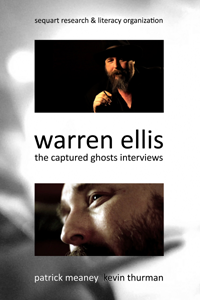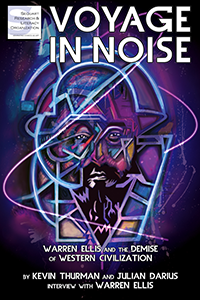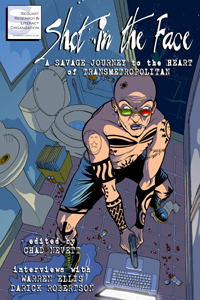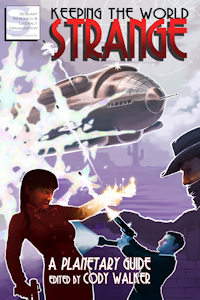The idea of the modern American super-hero is an abstract and nebulous concept.[1] America is in a constant state of change and evolution; as such, we can only assume that our icons evolve with it. In our heroes, we denote characteristics and ideals, but the only way we can understand the individual super-hero and her purpose is by careful contextual observance. In Jeffery Lang and Patrick Trimble’s essay, Whatever Happened to the Man of Tomorrow? An explanation of the American Monomyth and the Comic Book Superhero, the authors reassess Robert Jewett and John Lawrence’s key text on super-hero study, The American Monomyth.Both of these works formulate a significant base for the serious study of the super-hero. Lang and Trimble’s contribution is their final revelation that is as simple as it is precise: “The only conclusion that can be drawn is that, as America and Americans have learned and matured, their concept of what a hero must be and their choice for a being who reflects their values and ideals have changed” (172).
The 21st-century modern American super-hero is not the equivalent of the twentieth-century modern American super-hero. In fact, the appearance of what is typically classified as the first “super” hero in comic books is 1938, with the publication of Action Comics #1, starring Siegel and Shuster’s Superman. The whole notion of “super” comes from this caped hero’s name. Previously, creators would have referred to characters, like the Phantom, as costumed heroes. However, while we may not see the traditional concept of the super-hero appear until after the first decade of the twentieth century, one can certainly trace backwards to the turn of the century and find evidence of characteristics and ideals that would eventually apply to the super-hero genre. The birth of American modernism and modernization is the key cultural development that will lead to the definition of the super-hero genre. To study this development I will turn to the single highest concept in super-hero comics history: the Wildstorm Comics publication, Planetary.
Warren Ellis (writer) and John Cassaday’s (artist) Planetary was first published in April 1999 and from its very first issue it became extremely apparent what their intention was: To trace the ancestry of the American “super” hero. By doing so, Ellis’s meta-narrative / history places the birth of the “super” hero at the beginning of the twentieth-century. The effect of this is the revelation of the birth of modernism in American culture and an archeology of American popular culture. By result, there exists a paradox in his creation. Ellis has shaped a situation wherein he has created the ultimate postmodern super-hero concept while at the same time revealing the modernist arrival of his own heroes. The birth of Planetary’s main character, and many other super-heroes in the book, is the year 1900.[2] The implication of Ellis’s choice suggests it is also here that the super-hero genre is born. The appropriateness of this choice is apparent with a casual observance of an historical timeline of America at the turn of the last century. A tumultuous and glorious era in history, it is the seat of American modernism.
The arrival of a new century is a powerful occurrence. It affects the psyche of its people. It pushes and provokes change. It challenges, threatens, and provides hope in one giant forward propulsion. The twenty-first century brought fear and forward thought together. A world held its breath and waited to see if its lights would go dark. Despite abundant apocalyptic and “end times” theory, the world, and our nation persisted. However, our ignorance and arrogance also brought America its greatest tragedy, and once again, like almost one hundred years prior, we find ourselves in a foreign place, drowning in a war that leaves America scratching its collective head. Despite this, it is without a doubt that what America is capable of this century has the potential of great wonder.
We are marked now by what can be observed as a postmodern existence. America is a state of fragmentation, consumerism, reflexivity and paradox and it is often quite difficult realizing what our immediate vision or goals are. This allows the model opportunity to look back with perspective and understand the climate in which the previous “turn of the century” America existed within. This is what Ellis does exactly with Planetary.
It is argued that America began to take on characteristics of modernism in the eighteenth-century, and if one were to look outside America she would find evidence even earlier in Europe. But, as noted by many historians, I believe modernism began taking on distinct forms in America beginning at the turn of the twentieth-century. Susan Hegeman’s bold vision of modernism is a clear signal for the need and creation of “super” heroes. America was ready for and needed them. She writes:
The historical and intellectual keys to modernism are well established, and rehearsed: the horror of the First World War, the development of the scientific concepts of relativity and uncertainty; Freud’s theory of the unconscious and infantile sexuality; the development and proliferation of consumer culture; the invention of the camera, the automobile, the street light, steel frame architecture, sound recording, the motion picture; the consolidation of the globe spanning European empires and the emergence of the United States as a central economic and military power. To this list we might profitably add what Perry Anderson has called “the imaginative proximity of social revolution,” providing hope and fear of radically disruptive changes to come. Perhaps just as crucially as any of these elements, modernism was characterized by self-consciousness, especially a distinct self-awareness of the rapidity of change, and distance from the past. (20)
A similar view is shared by Daniel Joseph Singal’s purposeful essay: “Towards a Definition of American Modernism.” Singal believes:
Modernism should be properly seen as a culture — a constellation of related ideas, beliefs, values, and modes of perception — that came into existence during the mid to late nineteenth century, and that had a powerful influence on both sides of the Atlantic since roughly 1900. (7)
Many of the above characteristics are apparent in the creation, existence, and study of super-heroes. The super-hero is a creation of science, technology, psychology, revolution, sexuality, values, beliefs, and so on, for what is the super-hero if not an image of our collective psyche. Ellis knows this and exploits it with great skill. He is able to reveal the history of modernist thought coupled with the history of the super-hero.
The construction of Planetary is based heavily on the fact that the reader is familiar with the super-hero canon and genre. As mentioned earlier, the first actual “super” hero didn’t appear until the late thirties. However, it is understood, and co-opted heavily by Ellis, that the Victorian adventurers and pulp heroes created in the preceding decades are the sources for the super-heroes that would appear in the Golden Age of comic books.
At this moment it is critical to pause to define the super-hero genre. Despite the increase of serious scholarship given to comic books in the last decade and a half there has been little done to define the super-hero genre until very recently. Like the heroes before the “super” heroes the elements that comprise the super-hero genre are gleaned primarily from the rich tradition of the hero myths that date back to the beginning of civilization. In fact, many an argument can be sufficiently made that these heroes could be classified as “super” heroes. This, of course, is only natural when tracing the history of anything.
The timeline of scholarly hero / monomyth study is a series of adaptations, appropriations, and expansions and begins in the mid twentieth-century with Joseph Campbell’s The Hero with a Thousand Faces:
There we find a provocative description of the archetypal plot for heroic action in traditional mythologies. The classical monomyth, as Campbell called it, offers this story pattern: a hero ventures forth from the world of common day into a region of supernatural wonder; fabulous forces are there encountered and a decisive victory is won; the hero comes back from this mysterious adventure with the power to bestow boons on his fellow man. (Lawrence and Jewett 6)
Campbell’s classical monomyth can be seen as the first attempts of defining the “super” hero through plot device. Lawrence and Jewett expand upon Campbell’s archetype by transporting the hero to America and prefacing it with “super”, thereby creating the American Monomyth:
A community in a harmonious paradise is threatened by evil; normal institutions fail to contend with this threat; a selfless superhero emerges to renounce temptations and carry out the redemptive task; aided by fate, his decisive victory restores the community to its paradisiacal condition; the superhero then recedes into obscurity [his secret identity]. (6)
What Lang and Trimble offer to the conventions of the American monomythic hero is the evolving nature of the super-hero. These heroes do not remain static. They change and even cycle.
In 1992, Richard Reynolds wrote the first academic text to set down a definition exclusively designed for the super-hero:
This working definition has the authenticity of being constructed from the motifs of the first ever superhero comic. [Its resemblance to Lawrence and Jewett and Lang and Trimble's efforts is highly apparent.] 1. The hero’s devotion is marked out from society. He often reaches maturity without having a relationship with his parents. 2. At least some of the superheroes will be like earthbound gods in their level of powers. Other superheroes of lesser powers will sort easily with these earthbound deities. 3. The hero’s devotion to justice overrides even his devotion to the law. 4. The extraordinary nature of the superhero will be contrasted with the ordinariness of his surroundings. 5. Likewise, the extraordinary nature of the hero will be contrasted with the mundane nature of his alter ego. Certain taboos will govern the actions of these alter egos. 6. Although ultimately above the law, superheroes can be capable of considerable patriotism and moral loyalty to the state, though not necessarily to the letter of its laws. 7. The stories are mythical and use science and magic indiscriminately to create a sense of wonder.
The latest venture in defining the genre is perhaps the most deliberate. Peter Coogan’s soon-to-be-published Michigan State University dissertation, The Secret Origin of the Superhero: The Emergence of the Superhero Genre in America from Daniel Boone to Batman is the closest resemblance to a lexicographical entry:
A heroic character with a selfless, prosocial mission; who possesses superpowers, advanced technology, mystical abilities, or highly developed physical and/or mental skills; who has a superindentity and iconic costume, which typically express his biography or character, powers, and origin (transformation from ordinary person to superhero); and is generally distinct, i.e. can be distinguished from characters of related genres (fantasy, science fiction, detective, etc.) by a preponderance of generic conventions. Typically superheroes have dual identities, the ordinary one of which is kept secret. (358)
As a postmodern narrative, Planetary still minds the primary characteristics and functions of the super-hero genre while simultaneously uncovering their purpose.
The name Planetary represents both the title of the comic and the super-team that the books main characters are a part of. The team is made up of Elijah Snow, Jakita Wagner, and The Drummer. They are, as described on the cover, “three people who walk the world in search of strangeness and wonder, uncovering things others wish were left covered. They are the mystery archeologists, explorers of the planet’s secret history, charting the unseen borders of a fantastic world.” Ellis, like the Planetary team, is an archeologist of the impossible, “uncovering one hundred years of super-hero history.”
To begin his excavation Ellis establishes the year 1900 as the beginning of comic mythology. Several of the central characters in the book are born on 1 January 1900. This is significant for several reasons. As stated earlier, century “corners” have a distinct psychological effect on its occupants. Also, in America, 1900 can be viewed as a marquee for the study of the symbolic beginnings of modernism in America. While not overtly stating it, Planetary‘s premise paints a clear picture of modernism and the evolution of the super-hero.
Cultures choose heroes as an indication of their national character. America created monomythic heroes that personified the way Americans wished to see themselves — youthful, physically vigorous, morally upright, a people capable of existing in the melting pot of American technological society without sacrificing any individual sense of value. The heroes struggle was one of vertical mobility, raising himself from humble beginnings until he forced society to recognize him as a successful individual. (Lang and Trimble 159)
The turn into the 20th-century was a ripe time for “super” heroes. Why not? After all, America was becoming a “super” nation, made up of amazing figures with the ability to achieve the impossible. Figures like Henry Ford, Thomas Edison, Teddy Roosevelt, and Harry Houdini overcame great limitations to triumph well beyond the expectations of the average American. America heralded these figure and during the twentieth-century, as America became even more technological, the hero came to represent the needs of the masses” (Lang and Trimble 159).
Ellis begins the history of the super-hero with a nod to Victorian literature’s master detective, Sherlock Holmes. It is Holmes, as an old man, who teaches Elijah Snow how to be a “detective”. The presence of Holmes at this time period suggests he is a man more extraordinary than Doyle could ever write him. Doyle effectively killed Holmes in December of 1893 with the publication of The Adventure of the Final Problem. This would suggest Ellis’s feelings as to the “super” hero qualities that such a character possessed and represented.
In the scene, Holmes is passing the baton to a new kind of super-hero. For if Holmes represents Victorian thought and idealism, then Snow and the pulp heroes represent the rebellion of Victorianism, modernism. Holmes agrees to Snow’s request, “To be a detective, then, my boy? Very well. I can instruct you in my methods. The fact that you found me proves your potential. To work then. For this is your century, and it needs you” (10).
As modernist thought “represents an attempt to restore a sense of order to human experience under the often chaotic conditions of the twentieth-century existence,” so does Ellis’s history of the super-hero (Singal 8). Planetary is a postmodern text. It is a meta-narrative. It is art commenting on art, and it is a comic commenting on comic history. In Geoff Klock’s essay “The Superhero as Critic,” the first published on the importance of Ellis’s work, he leaves little to be said about the importance of Planetary. In fact, he calls that chapter of his book, How to Read Superhero Comics and Why, “the apex toward which this book has developed”(153). He calls Planetary, “the height of the revisionary superhero narrative” (153). Klock’s argument is made with three points:
- The revisionary super-hero narrative battles anteriority, the past, by coming to terms with its own fictional history and narrative determination. Planetary shows comic book history as a battle with an earlier self ?pulp novel characters struggling with the golden age super-heroes, silver age heroes killing off golden age icons. (154)
- Planetary stages the repression of the old, the “impossibility” of writing the earlier form, when the new form literally kills the old. (159)
- Planetary is: the secret history of the twentieth-century super-hero narrative: the combat to determine the shape of the super-hero to come, the future of the super-hero narrative. (171)
Klock’s observations are insightful, but they become mired in the postmodern aesthetic of Planetary. What he fails to report is the “American” historical significance of Planetary’s timeline. The book is indebted to modernist culture, for it fostered the creation of the super-hero.
We know our heroes are created out of need. America’s needs in a hero are a direct reaction to its fears and hopes of the past and future. As America discovers and realizes what it needs in a hero it simultaneously and subconsciously reveals it own history. As Ellis and Cassaday illustrate, the pulp heroes: Doc Savage, Fu-Manchu, Operator 5, G-8, Tom Swift, Tarzan, and the Spider, are created as a beginning response to specific circumstances: Victorian thought. When these heroes could not keep up with American progress and modernization entering the third decade of the twentieth-century we see the Golden Age of heroes created: Flash, Superman, Wonder Woman, Batman, Green Lantern, Martian Manhunter. And more so, the heroes of the Silver Age: the Fantastic Four, the X-Men, these are science and thought super-heroes. These are modernist creations. These figures are truly born out of modernist thought: order in chaos, a unifying of principles, self-consciousness, self-awareness, the rapidity of change, distance from the old order.
Only the postmodern heroes of Planetary could have the perspective and power, a product of the twenty-first-century, to properly observe the modernist foundation of their own existence. Postmodernism here allows the fragmentation, reflexivity, and questioning of rational thought to provide the means of a study of the invention of the super-hero.
As the monomythic hero moved from ancient traditions, to Christ of the Bible, to explorers and adventures, and ultimately to the caped crusaders we now are so familiar with, they only moved because their creators and culture demanded it. America has its super-heroes because America ushered in a new culture with the twentieth-century, and America will have its new super-heroes because we will not slow down, we will not pause, we will demand progress, the new. We will react to the past and predict the future. Our ideals, intelligence, and culture will foster the super-heroes we demand. If it is not on the comic page they will be on our television sets, our movie screens, our newspapers. They will be our leaders, scientists, and thinkers.
The excitement this brings is marked by the parallel: As we create our heroes we create our history, and America of the future will know more about us because of those creations. As we witnessed the emergence of the anti-super-hero, or the dark hero in such books as The Watchmen and The Dark Knight Returns, in the eighties, this ushered in a new era of hero, whose creation could only have risen from such a tumultuous climate. Though bleak this may have been, it gives us a history of America through its heroes. Our twenty-first-century super-hero is a product of self-examination and the next century’s super-heroes are sure to be filled with the mystery and wonder that creates America itself, as a nation and a spirit.
Works Cited
Campbell, Joseph. The Hero with a Thousand Faces. New York: Meridena, 1956.
Coogan, Peter. The Secret Origin of the Superhero: The Emergence of the Superhero Genre in America from Daniel Boone to Batman. Diss. Michigan State University, 2002.
Ellis, Warren (w) and John Cassaday (a). Planetary: All Over the World and Other Stories. Wildstorm / DC Comics, 2000. Book one of the softcover Planetary collections, collecting a preview story and #1-6 of the series.
Hegeman, Susan. Patterns for America: Modernism and the Concept of Culture. Princeton: Princeton University Press, 1999.
Jewett, Robert and John Shelton Lawrence. The American Monomyth. New York: Anchor Press, 1977.
Klock, Geoff. How to Read Superhero Comics and Why. New York: Continuum, 2002.
Lang, Jeffrey S. and Patrick Trimble. “Whatever Happened to the Man of Tomorrow? An Examination of the American Monomyth and Comic Book Superhero”. Journal of Popular Culture. Volume 22:3 Winter 1988.
Lawrence, John Shelton and Robert Jewett. The Myth of theAmerican Superhero. Grand Rapids: William B. Eerdmans Publishing Company, 2002.
Reynolds, Richards. Superheroes: A Modern Mythology. Jackson: University of Mississippi Press, 1992.
Singal, Daniel Joseph. “Towards a Definition of American Modernism”. American Quarterly, Vol. 39, No. 1, Special Issue: Modernist Culture in America (Spring, 1987): 7-26.
Notes
[1] The term modern here and after is meant to express an item as contemporary in context to the specific period referred to.
[2] In Planetary, Ellis refers to those born in this year as “century babies.”



























































